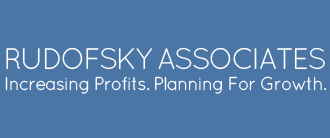Ten Watch-Outs When Launching a New Food Product (Part 1)
If you have decided to embark on the launch of a new food product, you should have a financial plan which captures the expected revenue and costs, so you understand the required investment, and don’t unexpectedly run out of cash before you hit your breakeven point. Based on my experience helping numerous clients put together such projections, I’ve developed a list of ten items you want to be sure to consider when pulling together financial projections for a new food business. Numbers 1 through 5 are discussed below, and numbers 6 through 10 are in a subsequent post:
1. Yield loss – It is not sufficient to simply cost out your bill of materials and multiply by the number of packages or cases you project you will sell. Invariably, there is going to be some “yield loss” of purchase raw and packaging material, i.e., material you purchase which does not make it into the final product you ship. The exact amount which is lost will vary based on the nature of your product, the ingredients and packaging material you use, your production process and controls, and whether it is produced in small or big batches, along with a host of other factors. If you are self-manufacturing, you should make efforts to closely measure your actual material consumption on a batch-by-batch basis, which will give you a better understanding of how the material you consume may exceed what makes it into the finished product. If you are working with a co-packer, you should push for a conversation about what yields they are experiencing, (and if they can be improved), as ultimately you are the one who is paying for them.
2. Quality Assurance / HACCP – If you are self-manufacturing, and have not yet developed and implemented a HACCP plan, you will be required to soon as the FDA steps up regulatory efforts to assure the safety of this country’s food supply. HACCP stands for Hazard Analysis of Critical Control Points, as described in Title 21, Section 120 in the Code of Federal Requirements. Unless you are yourself a food safety expert, or already have one on your team, this will probably entail hiring a consultant who has a strong background in good manufacturing practices and food safety. The cost will vary depending on the complexity of your manufacturing set-up; a client of mine was quoted $15,000 to write the HACCP plan by an extremely qualified consultant. Just getting the plan in place is only the first step, you then need to have to have people trained and available for the ongoing record keeping which represents the “C” in Control. This could be an added expense.
3. Scheduling factors – If you think realistically about the sales demand for your new food or beverage product, you will realize that it is impossible to know the weekly fluctuation in sales, which may be a problem, since your manufacturing capacity will probably remain fairly constant. This will leave you one of two options: 1) Make to ship or 2) Make to order. Either one has an added cost which is easy to forget to build into your plan. “Make to ship” will likely involve some unabsorbed factory labor in the slow weeks, and perhaps some overtime payments in the weeks in which you push to meet peak demand. “Make to order” involves tying up cash and space with inventory. You need to anticipate which method will work best for you, and plan for the resulting costs. If your product is to be manufactured by a co-packer, unless it is a perishable product, they will probably prefer to do the bulk of your production in less-frequent, long continuous runs and any requests on your part for them to do otherwise may trigger higher co-packer charges from them to you.
4. Free goods / slotting allowance – Once your product is manufactured and packaged, you are ready to get it on store shelves, and see how many consumers buy it each week. But there may be a catch. Because of the high failure rate for new items, many retailers will charge you a “slotting fee” to shelve your new food item, to help allocate some of the cost of these failed products from them to you. There is no industry standard for what this fee might be, but in some instances it has run as high as $25,000 per item to get it shelved in all of the units of a major supermarket chain. Some retailers might stock your new item for less, and others may accept “free goods” as an alternative, it’s up to you to negotiate, and find retailers that are less harsh in what they demand to put you on their shelves. According to Forbes, today 13% of food manufacturers’ revenue goes to trade spending, which includes both discount programs as well as slotting allowances.
5. Sampling – In-store product demos are a proven way to make consumers aware your new product is on the store shelf and consider buying it for the first time. Demo costs include the person or agency you hire to run it, the cost of the product and any miscellaneous supplies. A client of mine with an early stage food product has been spending $15,000 to $20,000 per quarter on demos, just to give a sense of how the expenses can add up. They are in a very competitive category, and need to give consumers a reason to switch. But the alternative may be worse: if your new product doesn’t show sufficient “case turns” after an initial time period, the retailer may delist it, and then you have lost the opportunity to sell plus your initial slotting allowance.


